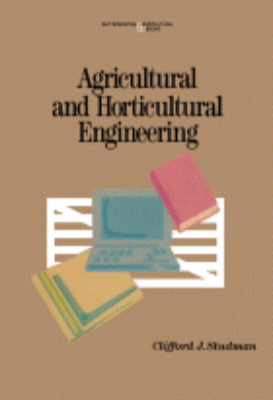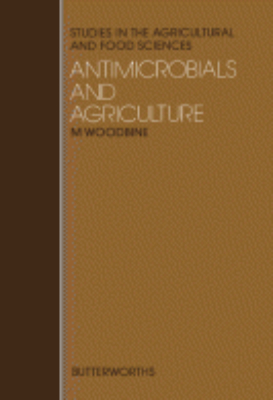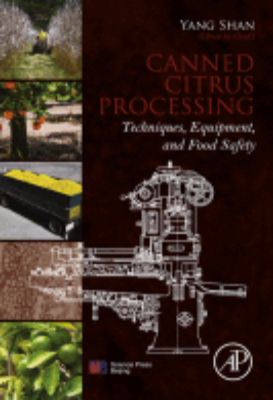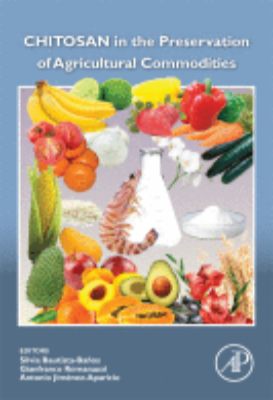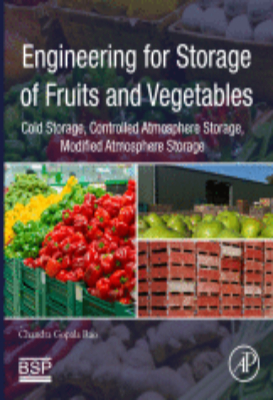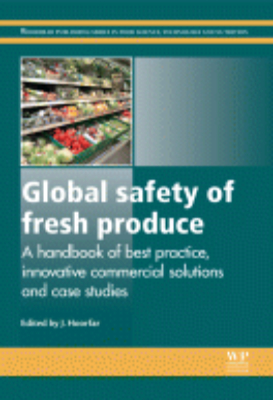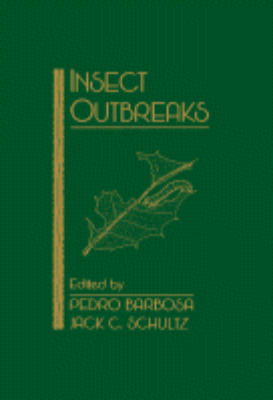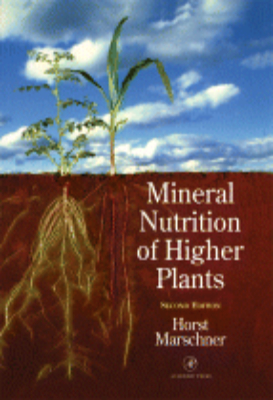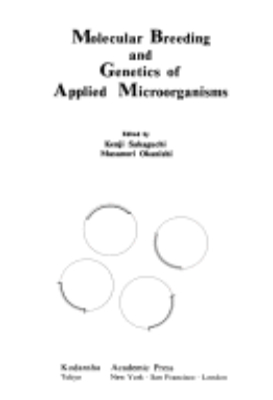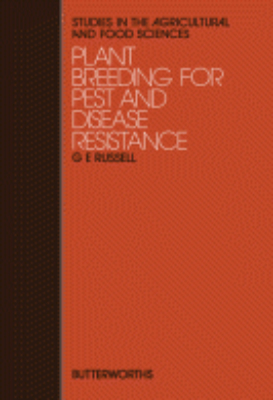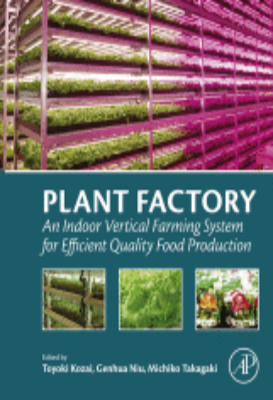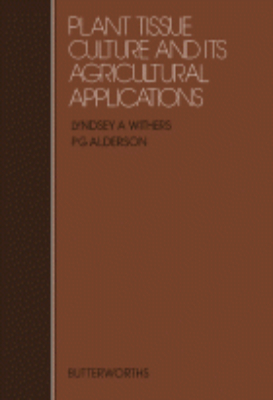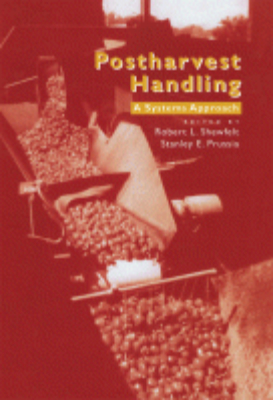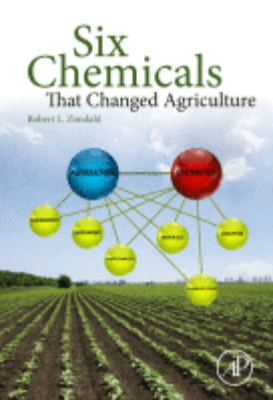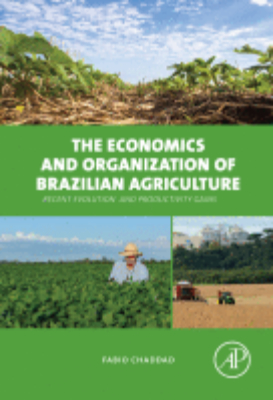E-Resources
Agrarian Development in Peasant Economies
Agriculture and Forestry Division, Volume 2: Agrarian Development in Peasant Economies: Some Lessons from Kenya tackles various areas of concerns in agriculture in the context of peasant economy. The title provides examples from the Kenyan agrarian development policies. The text first covers concern in improving agricultural production, and then proceeds to tackling post-war Kenya. Next, the selection talks about Kenyan agrarian revolution, along with the economics and features of peasant agriculture. The sixth chapter discusses government and agrarian development, while the seventh chapter details further problems of agrarian reform. The book will be of great interest to political scientists, economists, agriculturists, and sociologists.
Agricultural and Horticultural Engineering
Agricultural and Horticultural Engineering: Principles, Models, Systems, and Techniques focuses on the developments in agriculture and horticulture, including the role of engineers in employing measures in the management of plants, animals, and machinery. The book first offers information on the process of surveying, including tape, compass, and aerial surveying, leveling, barometric leveling with the aneroid, plane tabling, and electronic distance measurement and electronic total. The text then takes a look at models of the environment, material properties, and the relationship between stress and strain. The publication examines workshop methods and hydraulics. Topics include soldering, electric arc welding, low temperature brazing, welding using oxygen-acetylene apparatus, hydrodynamics, and water supply requirements. The text also reviews electricity and electronics and power and thermal systems, as well as alternating voltage supplies, electrical motors, electrical safety, power and energy consumption, and the fundamental principles of electronics. The manuscript is a dependable reference for engineers and readers interested in agricultural and horticultural engineering.
Agricultural Statistics
Agricultural Statistics: A Handbook for Developing Countries presents the development of agricultural statistics in various countries of Africa and Asia. This book provides a guideline to those in charge of agricultural statistics in developing countries to know their priorities and to have clear objectives. Organized into 14 chapters, this book begins with an overview of the importance of regular collection of agricultural statistics to the functioning of the community as well as for its agriculture and agricultural development. This text then examines the improvement of methods of collection of existing statistics for greater dependability. Other chapters consider the yield rates and areas of crop production. This book discusses as well the direct estimation of production, which consists of large estates with their processing plants meant for processing their products only. The final chapter deals with the various organizational set-ups for the compilation of agricultural statistics. This book is a valuable resource for agriculturists and statisticians.
Agricultural Sustainability
Collaboratively written by top international experts and established scientists in various fields of agricultural research, this book focuses on the state of food production and sustainability; the problems with degradation of valuable sources of land, water, and air and their effects on food crops; the increasing demand of food resources; and the challenges of food security worldwide. The book provides cutting edge scientific tools and methods of research as well as solid background information that is accessible for those who have a strong interest in agricultural research and development and want to learn more on the challenges facing the global agricultural production systems.
An Introduction to Economics for Students of Agriculture
The Introduction to Economics for Students of Agriculture describes the universal economic principles, illustrated primarily by examples drawn from farming and the food industry. This book is composed of nine chapters, and begins with what an overview of the concepts of economics, its objective, with a particular emphasis on the mechanism of allocating scarce resources. The succeeding chapters deal with the behavior of individual through the theory of consumer choice, the concept of demand and supply, market competitions, and production economics. These topics are followed by discussions on the mobility of the factors of production and unemployment, and some problems of using the market as a resource allocator. This book will prove useful to economists, agriculturists, and students.
An Introduction to Field Quantization
An Introduction to Field Quantization is an introductory discussion of field quantization and problems closely related to it. Field quantization establishes a commutation relation of the field and finds an operator in such a manner that the Heisenberg equation of motion is satisfied. This book contains eight chapters and begins with a review of the quantization of the Schroedinger field and the close relation between quantized field theory and the many-body theory in quantum mechanics. These topics are followed by discussions of the quantization of the radiation field and the field of lattice vibrations in a solid. The succeeding chapter deals with the familiar linear equations in relativistic field theory and the deduction of certain spin independent theories, which these fields have in common. Other chapter explores the derivation technique of the conservation laws for fields with arbitrary spin directly from the field equations without explicit recourse to Noether's theorem using a configuration space version of the generalized Ward identity. The discussion then shifts to the relativistic quantization method applicable to any field with arbitrary spin; the transformation of various fields under the Lorentz transformation; and a general method for constructing wave functions explicitly, as well as the application of this method to several examples. The concluding chapter focuses on the quantization of interacting fields. This book will prove useful to physicists and researchers.
Biology of the Nitrogen Cycle
"All organisms require nitrogen to live and grow. The movement of nitrogen between the atmosphere, biosphere, and geosphere in different forms is described by the nitrogen cycle. This book is an activity of the COST 856 Action on Denitrification. It covers all aspects of the N-cycle: chemistry, biology (enzymology, molecular biology), physics, applied aspects (greenhouse effect, N-pollution problems, practices in farming, in waste-water treatment, and more). In this book, leading editors offer the latest research available on dentrification (reduction of nitrates or nitrites commonly by bacteria- as in soil). Key Features. Provides details on denitrification and its general role in the environment. Offers latest research in N-Cycle and its reactions. Discusses impacts on various environments: agriculture, wetlands, plants, waste-water treatment and more. The only book available in the field since the last 20 years. Contains 27 chapters written by internationally highly recognized experts in the field. Covers all modern aspects, emphasizes molecular biology and ecology. Written in an easily understandable way"
Canned Citrus Processing
Citrus is one of the most popular fruits around the world, and can be successfully cultivated in more than 140 countries. Producing 75% of citrus consumed in the global market, China has become the new Kingdom of Canned Citrus. Canned Citrus Processing: Techniques, Equipment, and Food Safety comprehensively presents the technical and development trends of the canned citrus industry. This book provides solutions to typical problems of canned citrus manufacturing and processing; presents an overview of the canned citrus industry, introduces canned citrus processing machinery and equipment, and discusses the processing quality, safety control, and related standards.
Chitosan in the Preservation of Agricultural Commodities
Chitosan in the Preservation of Agricultural Commodities presents a cohesive overview of research topics regarding the production and characterization of chitosan, the development of coatings and fi lms, its functional properties, and antimicrobial potential of this compound on economically important agricultural commodities. It includes the modes of action from a physiological, enzymatic, and molecular perspective, and evaluations of the activity of chitosan nanocomposites and nanoparticles in biological models. The first section deals with the chemical characteristics and functional properties of chitosan and new chitosan-based biomaterials intended for food preservation. The second section covers various aspects of the control achieved by chitosan on different microorganisms affecting various horticultural commodities, grains, and ornamentals, and its modes of action. The third section explores enzymatic and gene expression induction by chitosan application on fruit and vegetables; the fourth section offers insight on the use of chitosan nanocomposites in biological models associated with food conservation and control of microorganisms.
Dielectric Properties of Agricultural Materials and Their Applications
"Dielectric Properties of Agricultural Materials and Their Applications provides an understanding of the fundamental principles governing dielectric properties of materials, describes methods for measuring such properties, and discusses many applications explored for solving industry problems. The information in this reference stimulates new research for solving problems associated with production, handling, and processing of agricultural and food products. Anyone seeking a better understanding of dielectric properties of materials and application of radio-frequency and microwave electromagnetic energy for solution of problems in agriculture and related fields will find this an essential resource. Key Features. Presents applications of dielectric properties for sensing moisture in grain and seed and the use of such properties in radio-frequency and microwave dielectric heating of agricultural materials. Offers information for finding correlations between dielectric properties and quality attributes such as sweetness in melons, or other desired characteristics of agricultural products. Identifies conditions for selective dielectric heating of materials such as insects in grain or biological organisms in soils. Provides a solid understanding of dielectric properties and the variables that influence these properties"
Engineering for Storage of Fruits and Vegetables
Engineering for Storage of Fruits and Vegetables is a comprehensive reference that provides an understanding of the basic principles of cold storage load estimation, refrigeration capacity calculations for various types of cold storages, and other topics of evaporative cooling, thus demonstrating the important principles for designing low cost precooling chambers. The book is written in an accessible manner to provide a solid understanding of different environments and their considerations to give readers the confidence they need to design suitable packaging materials by understanding parameters, including reaction rates, deteriorative reactions, Arrhenius equations, Q10, K, D, Z parameters, and their influence on reaction rates.
Global Safety Of Fresh Produce
"Continuing food poisoning outbreaks around the globe have put fresh produce safety at the forefront of food research. Global Safety of Fresh Produce provides a detailed and comprehensive overview of best practice for produce safety throughout the food chain, and unique coverage of commercial technologies for fresh produce safety. Part one covers the production and regulation of fresh produce on the agricultural level, including issues of niche farm fresh products, FDA regulation, and zoonotic transfer of pathogens from animals to farm products. Part two moves on to look at safety and environmental issues surrounding fresh produce processing, such as postharvest washing, alternative sanitizers, and using produce waste as animal feed. Part three focuses on current and emerging commercial solutions for fresh produce safety, like ionizing radiation and edible coatings, and part four covers methods of laboratory testing and related legislation. The final section of the book covers a series of case studies of fresh produce safety breaches, including European E. coli outbreaks in sprouts and leafy greens, and the illegal use of fluorescent whitening agents (FWAs) in China. This book is an essential text for R&D managers in the fresh produce industry, quality control professionals working with fresh produce throughout the food chain, postgraduate students, and academic researchers with an interest in fresh produce safety. Key Features. Provides a comprehensive overview of best practice for produce safety. Examines the production and regulation of fresh agricultural produce. Looks at safety and environmental issues surrounding fresh produce processing"
Herbivorous Insects
Herbivorous Insects: Host-Seeking Behavior and Mechanisms addresses mechanisms of searching behavior leading ultimately to host location of herbivorous insects. It is divided into four sections, wherein the first two sections deal with neurophysiology and the diversity of behavioral induction cues. The third section covers the searching mechanisms as affected by insects' breadth of diet. The last part examines the evolutionary analysis of the behavioral and physiological adaptations in insect/host plant relations. This book starts with an introduction to the chemical sensory system as it relates to host selection in general. This is followed by considerable discussions on host-seeking behavior and allied patterns in behavior. This text also includes the study of oviposition behavior in butterflies belonging to Papilionidae. The third section presents host selection and colonization by three insects within the saprophage-predator continuum, namely, Hylurgopinus rufipes, Scolytus multistriatus, and Pissodes strobi. The behaviors by which certain oligophagous insects locate and select food plants are also considered. The concluding part addresses the unifying theme and the diversity of responses of phytophagous insects to plants. The book provides direction toward developing a unifying theme and improving the ability to unravel the complexities of insect/plant interactions. Behaviorists, ecologists, entomologists, evolutionary biologists, and physiologists will find this book invaluable.
Insect Outbreaks
FROM THE PREFACE: The abundance of insects can change dramatically from generation to generation; these generational changes may occur within a growing season or over a period of years. Such extraordinary density changes or "outbreaks" may be abrupt and ostensibly random, or population peaks may occur in a more or less cyclic fashion....The goal of this book is to update and advance current thinking on the phenomenon of insect outbreaks. The contributors have reviewed relevant literature in order to generate a synthesis providing new concepts and important alternatives for future research. More importantly, they have presented new ideas or syntheses that will stimulate advances in thinking and experimentation.
Insect Pathology
Insect Pathology is designed for a broad spectrum of readers. Is should be useful to students, lecturers, and researchers requiring information about the principles in insect pathology and the biology of pathogens. It should serve as a resource for specialists to learn about other insect pathogen systems, for generalists to become aware of advances in insect pathology, and for scientists and students, beginning or otherwise, interested in learning about insect pathology.. This book was originally intended to update the 1949 test by E. A. Steinhaus entitled Principles of Insect Pathology. The purpose for this book was twofold: To serve (1) as a text for an insect pathology and/or biological control class and (2) as a comprehensive reference source. Because this book summarizes much of the available information, its usefulness as a textbook for an insect pathology class is apparent. Although the literature citations are extensive, they are far from complete. The literature in insect pathology is voluminous and for the past decade has been expanding at an almost exponential rate. A complete review of the literature is beyond the scope of the book, and an omission of a reference does not preclude its importance. Our citations, however, should serve as a good starting point for those who wish to obtain further information. We have attempted to cover equally all subdisciplines, but shortcomings are unavoidable. For these, we take full responsibility.
Insect Resistance Management: 2007
Insects, mites, and ticks have a long history of evolving resistance to pesticides, host-plant resistance, crop rotation, pathogens, and parasitoids. Insect resistance management (IRM) is the scientific approach to preventing or delaying pest evolution and its negative impacts on agriculture, public health, and veterinary issues. This book provides entomologists, pest management practitioners, developers of new technologies, and regulators with information about the many kinds of pest resistance including behavioral and phenological resistance. Abstract concepts and various case studies provide the reader with the biological and economic knowledge required to manage resistance. No other source has the breadth of coverage of this book: genomics to economics, transgenic insecticidal crops, insecticides, and other pest management tactics such as crop rotation. Dr. David W. Onstad and a team of experts illustrate how IRM becomes efficient, effective and socially acceptable when local, social and economic aspects of the system are considered. Historical lessons are highlighted with new perspectives emphasized, so that future research and management may be informed by past experience, but not constrained by it.
Managing Agricultural Greenhouse Gases
Global climate change is a natural process that currently appears to be strongly influenced by human activities, which increase atmospheric concentrations of greenhouse gases (GHG). Agriculture contributes about 20% of the worlds global radiation forcing from carbon dioxide, methane and nitrous oxide, and produces 50% of the methane and 70% of the nitrous oxide of the human-induced emission. Managing Agricultural Greenhouse Gases synthesizes the wealth of information generated from the GRACEnet (Greenhouse gas Reduction through Agricultural Carbon Enhancement network) effort with contributors from a variety of backgrounds, and reports findings with important international applications.
Marschner’s Mineral Nutrition of Higher Plants: 1995
"An understanding of the mineral nutrition of plants is of fundamental importance in both basic and applied plant sciences. The Second Edition of this book retains the aim of the first in presenting the principles of mineral nutrition in the light of current advances. This volume retains the structure of the first edition, being divided into two parts: Nutritional Physiology and Soil-Plant Relationships. In Part I, more emphasis has been placed on root-shoot interactions, stress physiology, water relations, and functions of micronutrients. In view of the worldwide increasing interest in plant-soil interactions, Part II has been considerably altered and extended, particularly on the effects of external and interal factors on root growth and chapter 15 on the root-soil interface. The second edition will be invaluable to both advanced students and researchers. Key Features. @introbul:Key Features. @bul:* Second Edition of this established text. Structure of the book remains the same. 50% of the reference and 50% of the figures and tables have been replaced. Whole of the text has been revised. Coverage of plant (soil interactions has been increased considerably)"
Molecular Breeding and Genetics of Applied Microorganisms
Molecular Breeding and Genetics of Applied Microorganisms provides expert reviews on the developments in the field of applied microbiology in Japan. The book presents areas where further progress in applied microbiology is possible. Articles on these possibilities such as the use of recombinant DNA techniques to link fragments of DNA from unrelated organisms; creation of new strains of microorganisms to control pollution; construction of a ""biological battery"" using a photosynthetic system; and breeding of plant species tolerant to various plant diseases are explored in detail. Microbiologists, biologists, geneticists, biochemists, pharmacologists, and researchers will find the book insightful.
Plant Breeding for Pest and Disease Resistance
Studies in the Agricultural and Food Sciences: Plant Breeding for Pest and Disease Resistance presents a critical review of the development of resistant varieties of plant to pests and diseases. It discusses the economic impact of pests and diseases; the methods of controlling these pests and diseases; and the challenges being faced by a plant breeder. Some of the topics covered in the book are the general principles and methods of breeding for resistance; importance of parasite variability to the plant breeder; methods of testing for resistance; requirements for successful inoculation; production of resistant varieties; and economic importance of fungal diseases; and variability in fungal pathogen. Pathogenic fungi and fungal diseases are also covered. The control of fungal diseases by resistant varieties is discussed. An in-depth analysis of diseases in plants is provided. The characteristics of bacteria and bacterial diseases are also presented. A chapter is devoted to epidemiology of diseases associated with mycoplasma-like organisms and rickettsia-like organisms. The book can provide useful information to farmers, botanists, students, and researchers.
Plant Factory
Plant Factory: An Indoor Vertical Farming System for Efficient Quality Food Production provides information on a field that is helping to offset the threats that unusual weather and shortages of land and natural resources bring to the food supply. As alternative options are needed to ensure adequate and efficient production of food, this book represents the only available resource to take a practical approach to the planning, design, and implementation of plant factory (PF) practices to yield food crops. The PF systems described in this book are based on a plant production system with artificial (electric) lights and include case studies providing lessons learned and best practices from both industrial and crop specific programs. With insights into the economics as well as the science of PF programs, this book is ideal for those in academic as well as industrial settings.
Plant Tissue Culture and Its Agricultural Applications
Plant Tissue Culture and Its Agricultural Applications presents the proceedings of the 41st University of Nottingham Easter School in Agricultural Science held in England. The sessions covered in this volume reflect the revolution of tissue culture and its role in the propagation of elite plant material and the development of improved genotypes. This book is organized into four main sections. The first section chronicles the revolution of the plant tissue culture. This includes papers on clonal propagation, morphogenesis, germplasm storage, plant health, and genetic improvement. The core of this volume is covered by the introductory and the final chapters which interrelate the different subjects areas covered by the proceedings and provide a realistic assessment of future research required for the plant tissue culture revolution to come to fruition. This book will be useful to readers interested in understanding the history, evolution, and future of plant tissue culture and its applications in the agricultural sector.
Postharvest Handling: 1993
"Postharvest Handling: A Systems Approach introduces a new concept in the handling of fresh fruits and vegetable. Traditional treatments have been either physiologically based with an emphasis on biological tissue or technologically based with an emphasis on storage and handling. This book integrates all processes from production practices through consumer consumption with an emphasis on understanding market forces and providing fresh product that meets consumer expectations. Postharvest physiologists and technologists across the disciplines of agricultural economics, agricultural engineering, food science and horticulture along with handlers of minially-processed products within the fresh produce fruit and vegetable processing industries will find this to be an invaluable source of information. Key Features
Resource Structure of Agriculture
Resource Structure of Agriculture: An Economic Analysis focuses on the quantitative economic analysis of the agricultural industry. The book first discusses the theory of resource demand. Topics include decision milieu in agriculture; aggregate demand for an input; and notes on the statistical estimation of the demand function for an input. The text also examines the role of labor in agriculture, including agricultural wages, migration from agriculture, and regional labor supply. The monograph underscores the use of machineries in the agricultural sector. Analysis of post-war demand for power and machinery; early developments in agricultural mechanization; trends in the use of other machinery; and supply conditions for agricultural machinery are discussed. The text also looks at the use of fertilizers and pesticides in the agricultural sector, as well the need to invest in farm buildings. The book examines the demand for resources and supply of agricultural products. Future pattern of resource use and technological change; interactions between demands for different resources; and resource demand and a derived supply elasticity are discussed. The text is a valuable source of data for readers interested in the economic analysis of the agricultural industry.
Securing Safe Water Supplies
Available water disinfection systems rely mainly on large-scale filtration and the combination of filtration (to remove solids), and subsequent application of chemical disinfectants. This has proven to produce water of acceptable quality. Important points for application in household systems are low complexity, few training requirements, and easy transportation and distribution as well as a sufficiently high acceptance by the user. Written and endorsed by the European Federation of Food Science and Technology this book compares a variety of purification systems. There is a growing evidence base on targeting water quality improvements to maximize health benefits, and it is believed that 4% of the global disease burden could be prevented by improving water supply, sanitation, and hygiene. Better tools and procedures to improve and protect drinking-water quality at the community and urban level, for example, through Water Safety Plans include the availability of simple and inexpensive approaches to treat and safely store water at the household-level.
Six Chemicals That Changed Agriculture
"Six Chemicals That Changed Agriculture is a scientific look at how the chemicals used in today's food production were developed, evaluated, and came to be in wide-spread use. From fertilizers to pest management, antibiotics to DNA, chemicals have transformed the way our food is grown, protected, and processed. Agriculture is the world's most important environment interaction, the essential human activity, and an increasingly controversial activity because of its use and presumed misuse of chemistry. The major characteristics of US agriculture for at least the last six decades have been rising productivity, declining number of mid-size farms, increasing farm size, an increasing percentage of farm production on fewer, large farms, increasing dependence of chemical technology and more developmental research being done by the agricultural chemical industry rather than by independent land-grant universities. Another equally important feature of modern agriculture is wide-spread suspicion of its technology by the public. The book will recount examples of this suspicion related to specific chemicals and present the essence of the suspicion and its results. Key Features. Offers an historical analysis of the discovery and development some aspects of the chemistry of modern agriculture. Addresses the advantages, disadvantages, desirable and undesirable results of the use of each of the chosen chemicals and compares and contrasts the real and frequently assumed problems of their use. Provides valuable insights into the history and application of these focused chemicals, enabling readers to apply the lessons to new agricultural chemical developments"
Statistics for Food Scientists
"The practical approached championed in this book have led to increasing the quality on many successful products through providing a better understanding of consumer needs, current product and process performance and a desired future state. In 2009, Frank Rossi and Viktor Mirtchev brought their practical statistical thinking forward and created the course Statistics for Food Scientists. The intent of the course was to help product and process developers increase the probability of their projects success through the incorporation of practical statistical thinking in their challenges. The course has since grown and has become the basis of this book. Key Features. Presents detailed descriptions of statistical concepts and commonly used statistical tools to better analyze data and interpret results. Demonstrates thorough examples and specific practical problems of what food scientists face in their work and how the tools of statistics can help them to make more informed decisions. Provides information to show how statistical tools are applied to improve research results, enhance product quality, and promote overall product development"
The Economics and Organization of Brazilian Agriculture
"The Economics and Organization of Brazilian Agriculture: Recent Evolution and Productivity Gains presents insights on Brazilian agriculture and its impressive gains in productivity and international competitiveness, also providing insightful examples for global policymakers. In Brazil, as in many countries, many economists and policymakers believe that agriculture is a traditional, low-tech sector that crowds out the development of other economic sectors and the country. This book shows that this anti-agriculture bias is ill-informed, and with population growth, rising incomes, urbanization and diet changes especially in developing countries like China and India on the rise, the demand for food is expected to double in the next 40 years. Brazil has the natural resources, technology and management systems in place to benefit from this expected growth in food consumption and trade. Through real-world examples, the book shows how other low-latitude countries with tropical climate and soils like Brazil especially in sub-Saharan Africa can benefit from the agricultural technology, production, and management systems developed in Brazil. Case studies in each of three key categories, including technology, resource management, and effective government programs provide valuable insights into effective decision-making to maximize the effect of each. Key Features. Provides important and practical insights into achievable agricultural options via case studies. Addresses the use of natural resources, technological advances, and management systems to create viable, adaptive economic growth. Applies lessons learned in Brazil to improving both economic and ecological resource-sustainable agriculture for other regions and countries"
The Produce Contamination Problem: 2009
Understanding the causes and contributing factors leading to outbreaks of food-borne illness associated with contamination of fresh produce continues to be a worldwide challenge for everyone from the growers of fresh-cut produce through the entire production and delivery process. Additionally researchers both at universities and in government agencies are facing an increased challenge to develop means of preventing these foodborne illness occurrences. The premise of this book is that when human pathogen contamination of fresh produce occurs, it is extremely difficult to reduce pathogen levels sufficiently to assure microbiological safety with the currently available technologies. A wiser strategy would be to avoid crop production conditions that result in microbial contamination to start. These critical, problem-oriented chapters have been written by researchers active in the areas of food safety and microbial contamination during production, harvesting, packing and fresh-cut processing of horticultural crops, and were designed to provide methods of contamination avoidance. Coverage includes policy and practices in the US, Mexico and Central America, Europe, and Japan.


